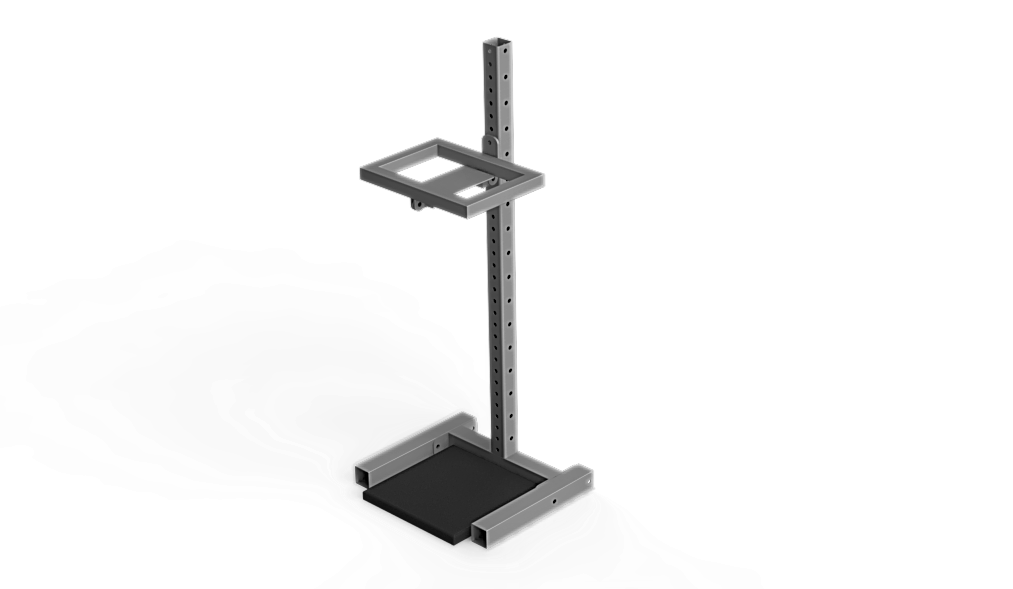Standardising Testing within Gyms - Acoustic Drop Testing of Free Weights
Each of the World Cup venues will have passed significant scrutiny by FIFA both around the stadium by way of transport links and infrastructure and within the stadium for safety and abundance, quality and type of facilities available to fans.Not a lot of people realise, even the ardent fan, but the pitch is also put under tremendous scrutiny prior to the competition taking place.
Standards to which International football is played has set parameters.For example, the pitch must be a minimum length and width.There must be minimum run offs.There must be certain levels of % force reduction across the playing surface, the ball must roll within set criteria and so on.If the long list of technical criteria is not met, the pitch will not receive ‘sign off’ by the test house.
Test equipment used for % force reduction, vertical deformation, restitution of energy
For many years test houses such as Labosport, Sports Labs, Surface Performance Ltd and Alastair Cox Associates abide by internationally agreed standards for indoor and outdoor sports surfaces.The results they provide are independent and factual.Testing has been standardized and is performed with calibrated testing equipment.

This got me thinking about the testing that is undertaken in gyms, particularly around noise and vibration transfer generated when using free weights, Olympic lifting, functional equipment such a slam balls and even treadmills.Yes, treadmills can have a low resonating profile and, a bank of treadmills at peak usage can have a ‘wackering effect’ on the floor.
What tends to happen is a gym opens, commercial, retail or residential neighbours complain about the noise.It could be quite obvious.It could be a dull thud but audible enough to hear or feel.This over time, particularly in an office or retail environment can be annoying. In a residential building it can have a detrimental effect on a person’s mental well-being (The World Health Organisation has set minimum noise thresholds for living and sleeping areas).
The noise issue must be resolved before the matter escalates.Noise abatement orders from Local Authorities could lead to gym closure.
A gym owner may call an equipment supplier to buy some thick rubber tiles for under the free weights.Thickness of rubber will not necessarily resolve the problem.The gym owner may then engage an acoustic consultant, specialist gym consultant or a specialist gym flooring company to help resolve the matter.
Diagnosis is where we would look to replicate the problem.Firstly, to see if what we think is the issue is actually the issue.Secondly with a correct and proper diagnosis we can formulate a remedy.It may be simple it may be a complex solution.
Usually, one person will mimic a weight being dropped on to the floor in a number of areas around the gym and sound pressure levels are taken in the gym and in the complainant’s premises.
This could be done by dropping a 20Kg dumbbell from shin, knee or waist height (I have even seen ankle height).Then the test is replicated this time on different materials and floor build ups to improve the initial test readings.Subjective feedback can also be taken.
The problem I have with the testing method is that it non-standardised.For this reason, we have contributed to the development of a piece of equipment, quite simple in design, to aid in the testing in gyms.
The BOK ‘Dropometer’ allows variable KG dumbbells be dropped for variable heights to take consistent and accurate readings when undertaking acoustic and subjective drop tests.This equipment can be used in conjunction with the recording equipment used to take sound level results.

Here are some examples of activities that can potentially generate issues of noise and neighbour complaints and advice should be sought prior to opening if possible: -
- Olympic Lifting / Free-weights – high impact noise from heavy equipment impacting on to the floor, this energy can transfer to other parts of the building.
- Cardio-Vascular Machines (CV) –Treadmills can be an issue with impact and a bank of say 5 or more treadmills all in simultaneous operation can have a ‘wackering’ effect on the gym floor.
- Group Exercise Classes – some classes for example, body pump, can have a large number of class participants dropping barbells pretty much in unison. Often group exercise classes have highly motivational music levels and an instructor microphone linked to speakers.
- Fixed Resistance Machines – can generate high noise levels from weights impacting on each other and the machine stack.
I see no reason why a number of acoustic test houses, gym design consultants and specialist fitness flooring companies cannot come together to develop standardised test methods for some of the common noise risks surrounding gym design and operation.